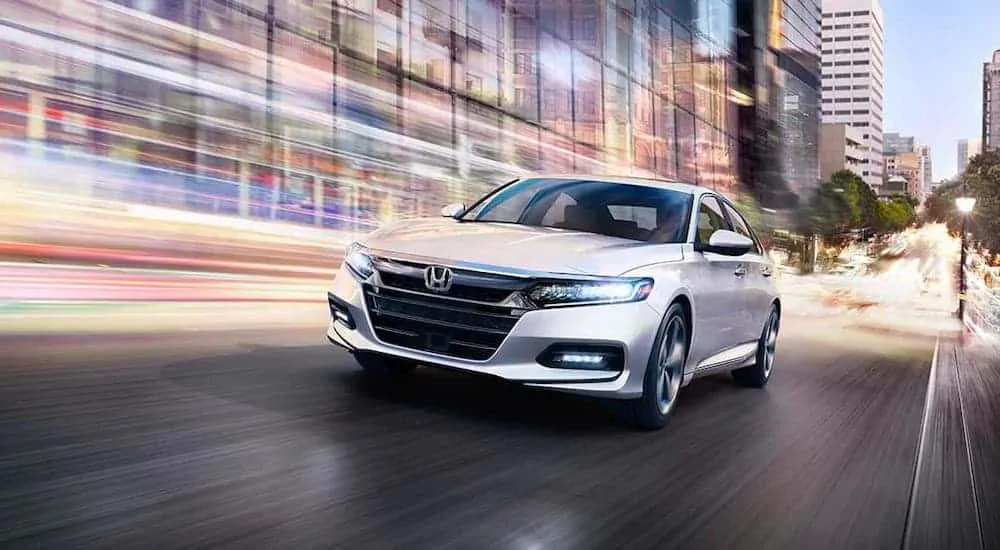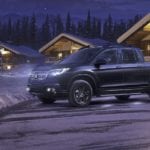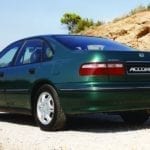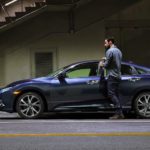Recently, I’ve spent some time thinking about visiting the Honda dealer near me to test drive a few models. Honda has come a long way since its initial inception and has become a popular brand worldwide, but why is that?
In 1948, Soichiro Honda and Takeo Fujisawa joined forces to create Honda Motor Co., Ltd. Their first original designed-and-engineered product, the D-type motorcycle, launched their endeavor into what is now one of the top automobile and motorcycle manufacturers in the world. Today, Honda consistently appears at the top of rankings for worldwide auto manufacturers, global brands, and most valuable resale products. Throughout the years, Honda products, from the original motorcycles to family sedans, trucks, and SUVs, to concept green cars and even jets, have earned critical acclaim for their efficiency, capability, and budget-friendly approach to transportation.
The Honda brand had only existed for eleven years when the first American subsidiary was established, and it would still be a decade before Honda built its first automobile. The 1970s saw great traction with the brand, when new environmental and ecological concerns all but obliterated the huge classic family sedans that prowled the streets, replacing them with easy-to-drive, low-maintenance, economical coupes.
From there, the concept took hold, and today, Honda reports sales in the hundreds of thousands each month in the US. With classic models such as the Civic and Accord, SUVs ranging in size from the HR-V to the Pilot, the Ridgeline truck and Odyssey van, and electrified eco vehicles, a trip to a Honda dealer will reveal that the brand truly makes a vehicle for nearly every driver. But Honda’s journey to the top of the charts in the US has been a fascinating journey, indeed.
The Early Years
American Honda Motor Co., Inc, made its first appearance on June 11, 1959, in Los Angeles, CA. An early team, equipped with the D-type “Dream” motorcycles worked by hand from a warehouse to establish the brand’s presence in the US. Unfortunately, they discovered that the Dream bikes weren’t well-equipped for the American terrain and average usage, making way for the Honda 50 motorcycle. Amazingly, this bike took off immediately and is now heralded as one of the classic founders of modern motorcycles.
Shortly after, Honda Motor Co., Inc, began its design of automobiles; however, the Japanese Ministry of International Trade and Industry almost ended that enterprise before it began with legislation that limited the production of cars and light trucks. The brand was able to rush a mini truck and 500-cc sports car before the limits were set in 1963.
The US would not see a Honda automobile until 1969 when the N600 minicar was introduced in Hawaii; a year later, the minicar would come stateside to be offered in limited quantities to the West Coast. Slowly but surely, the Honda N600 gained traction across the country, and by 1972, one could find a Honda at dealerships from coast to coast.
Honda and the Fuel Embargo
When the 1973 oil crisis hit the United States, the original Honda Civic was just starting to hit the American market. With fuel economy at the forefront of everyone’s minds, the 30 MPG Honda N600 and the new 40 MPG Civic gained immediate attention from a newly gasoline-conscious market.
The first Civic was a two-door hatchback with a 1.2-liter four-cylinder engine that offered 50 horsepower and was cooled by water. It included seating for four passengers in an incredibly economical space, which was noted as being surprisingly comfortable for those in the front reclining bucket seats. This small economy car featured vinyl or cloth upholstery, optional air conditioning, a fold-down rear seat, and AM only radio. The simplicity and fuel economy of this vehicle made it an instant hit, making the Civic one of the perennial models in the Honda lineup.
Not only was it easy on the gas, but the exhaust emissions regulations put into place in 1975 were quickly met with Hondas Compound Vortex Controlled Combustion (CVCC) engine. Without a catalytic converter or the need for unleaded fuel, this specially-engineered system successfully minimized emissions while rising to the top of the EPA’s fuel economy charts.
The first Honda Accord hit the market as a hatchback model in 1976, with a 1.6-liter CVCC 4-cylinder engine and a tiny 93.7-inch wheelbase. This vehicle came with a humble-yet-serviceable 68 horsepower that was an upgrade from the first Civics. Inside, the early Accords included plenty of amenities, including an AM/FM radio, remote hatch release, and rear windshield wiper with defroster and washer. Three years later, the sedan version was launched, and in just a decade, the Honda Accord sedan became the best selling car in America from 1989 to 1991.
Overseas Manufacturing
As American Honda sales began to skyrocket, Honda Motor Co., Inc began its plans to start manufacturing its vehicles in the United States. The first assembly plant, located in Ohio, focused on motorcycles and opened in 1979.
In just three years, that Ohio facility became a million square foot factory, with the capacity to build around 150,000 automobiles per year. When the plant first opened, only the Accord was built in the US; however, Civics soon joined the fold. Early projections upon the production of the first Ohio-built Accord indicated that the plant would expect over 2,000 employees by 1984.
Though some criticized building Japanese-designed vehicles in the United States, sales continued to rise. One key element to this success was that Honda streamlined all vehicles it produced, meaning that the Japanese-built Accords and US-built Accords were entirely identical. This meant that construction operations were entirely consistent, with no variations or variables that would require a deviation in labor or assembly.
For comparison, it’s worth noting that the twelve current Honda facilities in the United States employ over 25,000 associates, and the Ohio plants alone have the capacity to create 440,000 vehicles each year. Since 1982, over 27 million Honda cars and light trucks have been built in the United States, with over ⅔ of the Hondas sold in the United States built here.
The Future of Transportation
Honda’s sudden appearance and influence on the auto market during a time that was key for environmental changes in the automotive industry wasn’t merely coincidental. Honda Motor Co., Inc. truly has a vision to provide transportation for the masses with a minimal impact on the environment. In 1992, the company released its Environmental Statement, and followed up on their sentiments with action in 1999, releasing the first North American hybrid vehicle, the Insight.
Since 1999, Honda has been able to incorporate hybrid vehicles into its regular lineup with offerings such as the Hybrid Civic and Accord, as well as the Insight and Clarity. The success of Honda’s hybrid offerings has much to do with the increasing American appetite for vehicles that are fuel-efficient, yet can accomplish long and short drives with ease.
Honda has also supplemented this increasing desire with vehicles that don’t stand out from the regular gasoline-only vehicle lineup. For example, the cost of a Honda hybrid vehicle is similar to that of a standard model, making the transition to hybrid affordable. After all, saving money on fuel doesn’t seem as important if the car payment has skyrocketed. Honda has also focused on creating hybrid vehicles that have the same drive feel as standard vehicles. While early hybrid vehicles seemed to lag or have a strange braking sensation, the new electric-based vehicles from Honda are seamlessly integrated into the standard lineup, with environmentally friendly features that do not detract or distract from the driving experience.
In fact, Honda has dedicated specific engineering efforts towards creating increasingly eco-friendly vehicles. The average fuel economy of the Honda and Acura lineup is approximately 38.6 miles per gallon, giving it an 18% advantage over the industry average. Additionally, CO2 emissions have decreased over the past year by 1.3%, putting Honda and Acura vehicles at a 15.1% better rating than the average within the automotive industry.
Visiting a Honda Dealership Near You
The next time you visit a Honda dealership, you’ll notice the rows of shiny Civics and Accords. You might explore the pre-owned options, all with many more miles of service left on them. As you browse, you might recall how a single humble shop in California was the impetus for an amazing worldwide empire, and how a single 50 horsepower hatchback started Honda on its path to the American drivers’ hearts.






